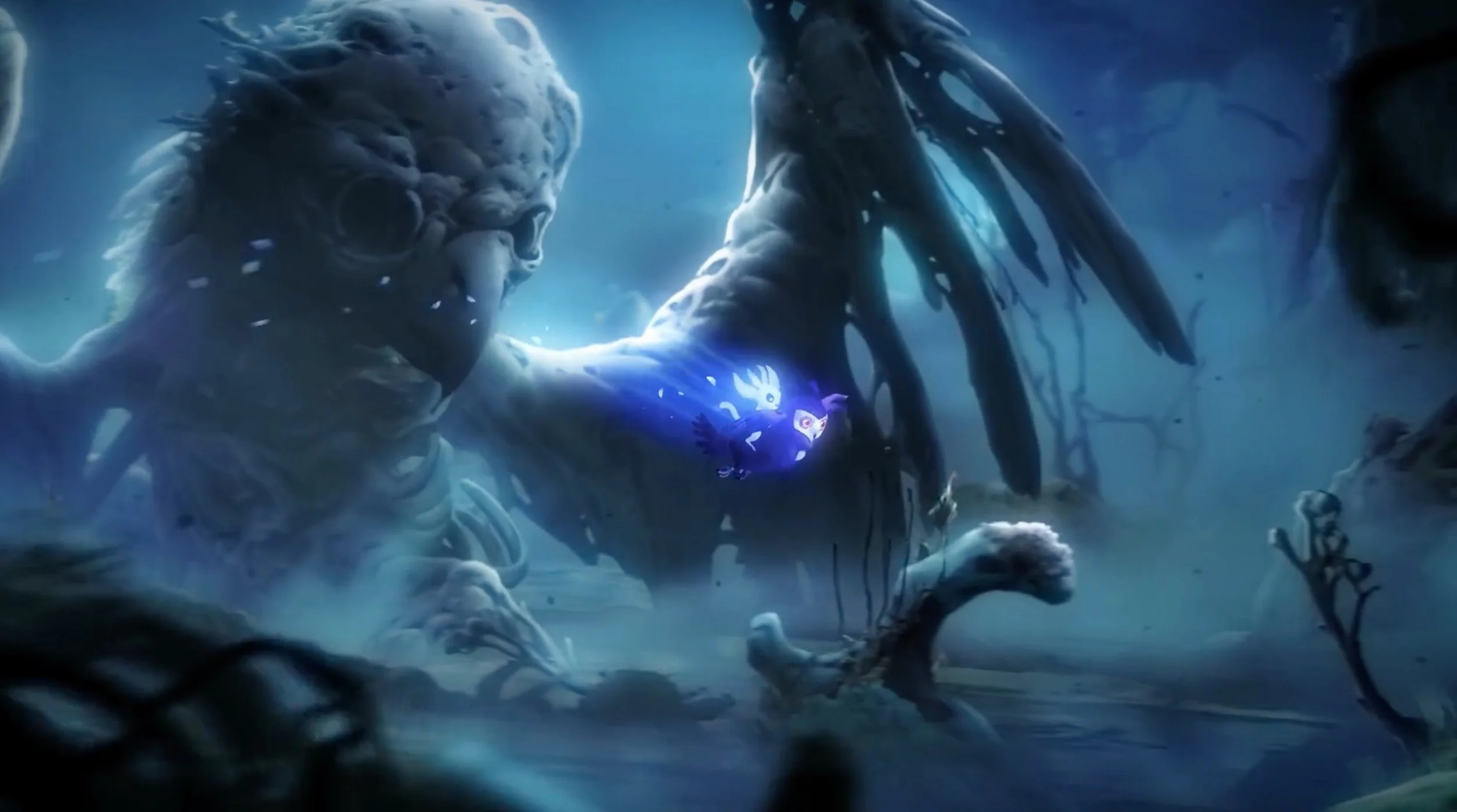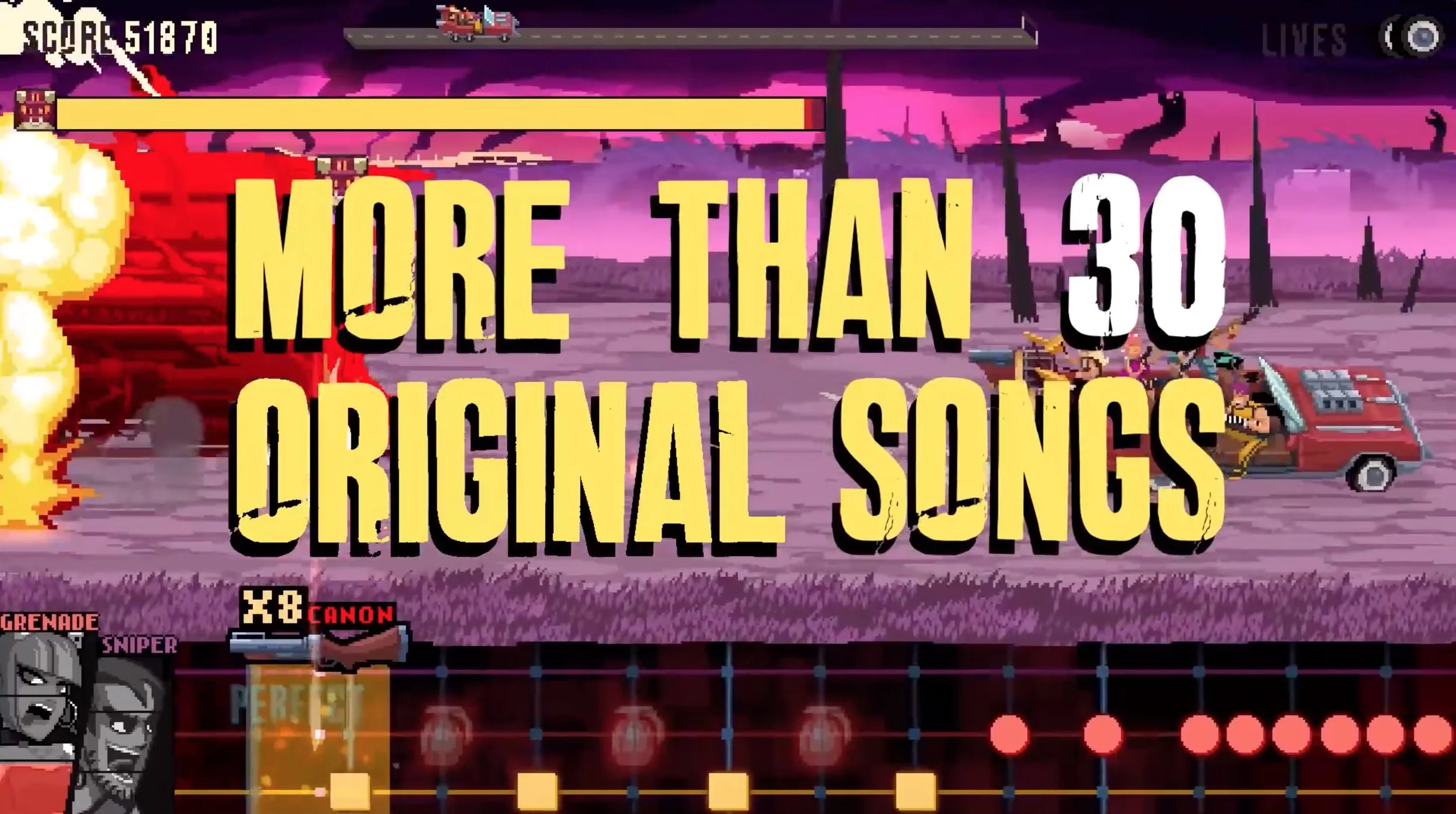Questions to Ask When You're Stuck
Despite all my experience I still have internal debates about what to include in a game trailer, especially when it comes to "content." When I say "content" I mean the quantifiable elements of the game such as the number of:
Levels
Costumes
Weapons
Items
Unlockables
Enemy types
Dialogue options
Endings
Hours of play
I believe the sum of these parts do not equate the experience of playing a game; this makes me reticent to call it out in my trailers. I think even people who get excited by the quantity of "content" will still respond better to a trailer which focuses on the feel and experience of the game, rather than title cards stating how many hours of play there are. Especially because fewer title cards means more time watching gameplay.
I think new editors assume this method of calling out features is a best practice for game trailers, because so many game trailers treat games like a product. Like I said in this post, title cards should only be used when needed to say something which cannot be done using the footage alone.
When I look at my favorite game trailers, virtually none of them list out features, but all of them evoke the experience or vibe of the game. This goal makes the most sense to me, because why use film language to communicate something you can show in a text document? A video can certainly show bullet point features, but in many cases it doesn't need to call them out explicitly.
It's very easy to show literal bullet points in a place the audience might check if they're still curious about specifics.
Yet I still second guess myself all the time on this debate, so to work through my doubts I've come up with some questions to help me find less subjective answers to my doubts. The idea is to ask these of anything in a trailer, whether it's the: game capture, title cards, narration, music or sound effects.
Why is this here?
What does the shot communicate? How does it fit in the trailer?
Who is this targeting?
Who is this meant to excite or inform? Who needs to know this? Who will understand this, and why?
Are they the audience for this?
Sometimes a shot is put in for a particular audience, but are they who you're trying to reach?
Is this relevant to that audience?
Considering who will watch and understand the meaning of this shot. Will this excite them and/or tell them something they need to know?Does this help convey the experience of this game?
Does this show what it is like to play this game? Does it help the audience understand the feel of the game?
First let's look at a made up example just to clarify how I came up with these questions. Here's a fake title card I made up for a made up Firewatch trailer which I designed to be completely dissonant to the goals of the game.
Why is this here?
This title card is here to tell people how much time they'll potentially spend playing the game.Who is this targeting?
This is targeting people who believe the length of a game is one of the most important things to know when making a purchasing decision.Are they the audience for this?
No. Firewatch is a short narrative focused game which is meant to be played from beginning to end in order to experience the story.Will this affect their buying decision?
Someone focused on the length of a game will probably not be sold on 4+ hours of content. The people who find value in game length typically want a dozen or dozens of hours of play whether because they're on a limited budget or just don't find as much value in short narrative games.Does this help convey the experience of the game?
No, it just says how long it potentially is.
This is an extreme example where the style of marketing is completely contradictory to the goals of the game. Hopefully this makes it clear how when the intentions of the game and the marketing don't align, you can end up targeting the wrong audience and completely missing the mark.
Now let's look at some real examples, and apply the same questions.
Why is this here?
This shot shows there's a new owl character in the sequel to Ori and the Blind Forest, and how they integrate into the gameplay. It also shows HOLY CRAP THE GAME IS GORGEOUS.Who is this targeting?
This is targeting both new players and returning players. Since there was no baby owl in the first game, returning players will instantly know there are new game mechanics in the sequel. New players will have the context of the trailer to know Ori is playable, and the Owl is as well (at least, in certain circumstances)Are they the audience for this?
Absolutely. This works for both old players and potential new ones. Old players will recognize what is new, and new players will see how the game mixes an endearing story with fun gameplay.Will this affect their buying decision?
Speaking as a player of the original, I'd be inclined to play any sequel of a game I loved, but seeing new gameplay ideas gets me extra excited to try them out, and see their potential. So yes, this gets me much more excited to buy the game.
New players might need more convincing since they haven't played the game already, but I think this could very well convince people to consider buying the game. I think the full trailer makes the game look very enticing to new players.Does this help convey the experience of the game?
Yes. This shot shows how the gameplay differs from the original, and how the new owl friend adds to it. The contrast between the dark and ominous background and cute fluffy characters also sets a striking tone for the game.
After asking these questions I'd feel pretty darn good about including this shot in the trailer! Of course, it's hard to imagine any shot from a game this pretty would be in any way a detriment, but this would still help me find a more concrete way to justify a creative decision if I had doubts.
Now let's look at a "content" focused title card. This is from the Nintendo Switch Announcement trailer for Double Kick Heroes:
Why is this here?
This title card is here because as far as I can tell, this is a rhythm game in the vein of Guitar Hero and Rock Band. This title card tells the audience how many songs the game has.Who is this title card targeting?
Since this is an announcement trailer, this is presumably targeting people who have never played the game. It's also directed towards people who need to know the game will be a certain length.Are they the audience for this?
In terms of this targeting a new audience, it's debatable how relevant this title card is. How enticing is it for the audience to see 30 songs worth of content if they're not already sold on the core idea of the game?
But the audience who already finds this game interesting will probably be happy to see there's a certain amount of content in the game. Though we can't know whether or not this sealed the deal or if people might've bought the game without knowing the number of songs.Will this affect their buying decision?
If someone is already sold on the idea of the game, then finding out there are 30 songs worth, then yes it probably will. But then again, there's no competition for this sort of game. This isn't like Rock Band vs. Guitar Hero. This is the only game that has this aesthetic and mechanic. If an audience is sold on the core idea, then this game is the only way for them to get this experience.Does this help convey the experience of this game?
Only in that it tells people about how long it will be.
—
Writing this out helped give me a little bit of clarity. What stood out to me most is this question:
When the trailer isn't for a literal add-on of content, how relevant is quantity when the experience is unique?
After all, games are not devices with comparable lists of features like kitchen appliances, cars or phones. While there is an experience to using appliances, it's not the same as the experience of playing a game or watching a movie. As far as I know, people don't look at different games on features list comparison charts before purchasing. I think we only use charts when buying something which compares so similar to another. Whereas games and movies exist side by side, and the purchase of one doesn't preclude the later purchase of another.
For example if I buy an iPhone, I'm not thinking to myself: "At some point I'll buy a Pixel too." For me, a game purchase is a decision based on what I want to play at that time; if I don't buy a particular game it's just because I don't want it or, not because I bought one which was similar, but "better."
The best games are unique experiences which are not comparable in a way I'd compare DSLR cameras. So why point the audience's eyes to features, and risk framing the value of the game on those terms?
This sounds like a bigger topic to save for another post, but for now if you struggle with whether or not to include something in a trailer just try these questions, and hopefully it will become clear whether or not you're on the right track!
Why is this here?
Who is this targeting?
Are they the audience for this?
Is this relevant to that audience?
Does this help convey the experience of this game





